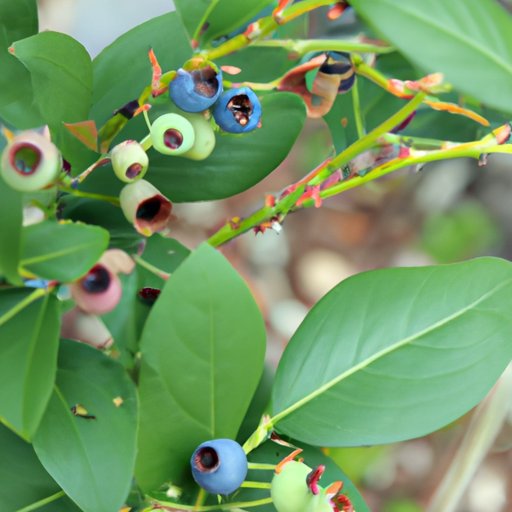Introduction
Blueberries are a delicious and nutritious fruit that can be grown successfully in many home gardens. In this article, we will provide a comprehensive guide to help home gardeners grow healthy and productive blueberry bushes. We will explore the benefits of growing blueberries at home as well as the factors to consider when choosing which variety of blueberries to grow. We will also discuss how to plant, prune, and fertilize blueberry bushes, as well as strategies for protecting them from pests and diseases. Lastly, we will highlight some creative uses for blueberries and their nutritional benefits.
Choosing the right variety of blueberries
Before choosing which variety of blueberries to grow in your home garden, there are a few factors to consider. These include your location, your soil conditions, and the intended use of the blueberries. It’s also important to consider if you’re looking for high bush or low bush varieties. High bush varieties tend to be more popular for home gardeners, since they produce larger berries and have a longer lifespan. Recommended varieties for different regions and soil conditions include the northern highbush, southern highbush, and rabbiteye blueberries.
Planting blueberries
Once you have selected the right variety of blueberries, it’s time to plant them. Blueberries prefer well-drained soil with a pH between 4.5 and 5.5. Prior to planting, it’s important to prepare the soil by using organic matter and removing any weeds. When planting blueberries, it’s recommended to plant them in a hole that’s twice as wide and deep as the root ball. Make sure the level of the root ball is above the soil line and don’t compact the soil around it. Watering should be a top priority post-planting, and mulching will help prevent weeds.
Pruning and fertilizing blueberry bushes
Pruning blueberry bushes is essential for maintaining healthy growth and fruit production. The best time to prune is in late winter or early spring before new growth occurs. First, remove any dead, diseased, or crossing branches. Then, thin out the canopy to allow sunlight to reach the center of the plant. Lastly, remove any weak growth to promote stronger branches. As for fertilizing blueberry bushes, it’s best to use organic or slow-release fertilizers. Apply these in the spring and fall, as well as adding some magnesium sulfate to the soil.
Protecting blueberry bushes from pests and diseases
Blueberry bushes are prone to a number of pests and diseases, including birds, spider mites, and blueberry maggots. It’s important to identify these pests and diseases early on in order to prevent them from destroying your blueberry bushes. The best defense against these pests and diseases is to use natural remedies, such as insecticidal soap and neem oil. It’s also important to use organic pesticides as a last resort and follow instructions carefully.
Creative uses for blueberries
Not only are blueberries delicious on their own, but they can also be used in a variety of recipes. From smoothies and muffins to pies and jams, blueberries are a versatile ingredient that can be enjoyed in endless ways. Blueberries are also incredibly nutritious, packed with vitamins and antioxidants that are beneficial to our health.
Conclusion
Growing blueberries at home can be a fun and rewarding experience for home gardeners. By following the tips and strategies outlined in this comprehensive guide, gardeners can grow healthy and productive blueberry bushes in their own backyard. From choosing the right variety of blueberries to pruning, fertilizing, and protecting them from pests and diseases, home gardeners can enjoy the delicious and nutritious benefits of blueberries right at home.
